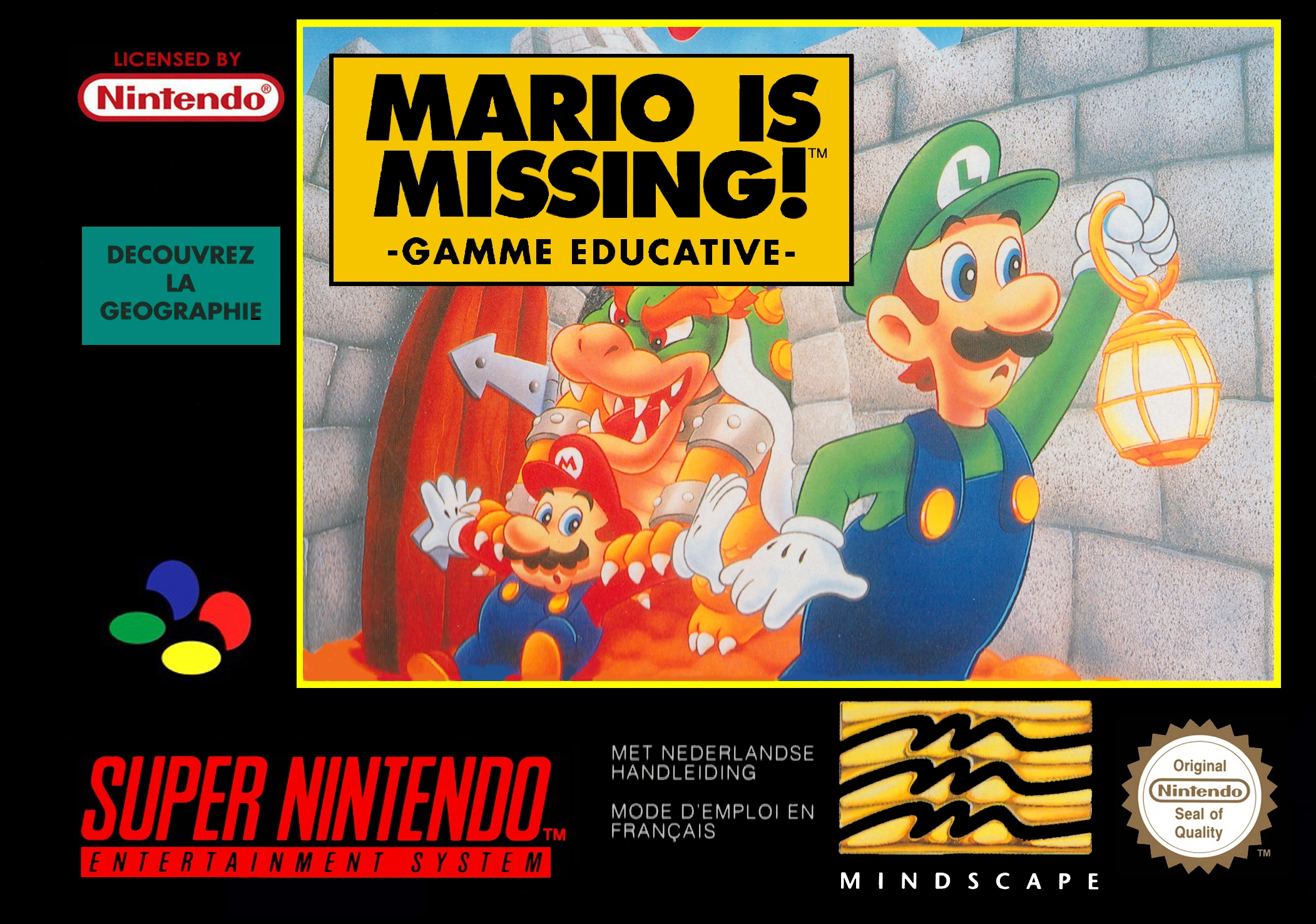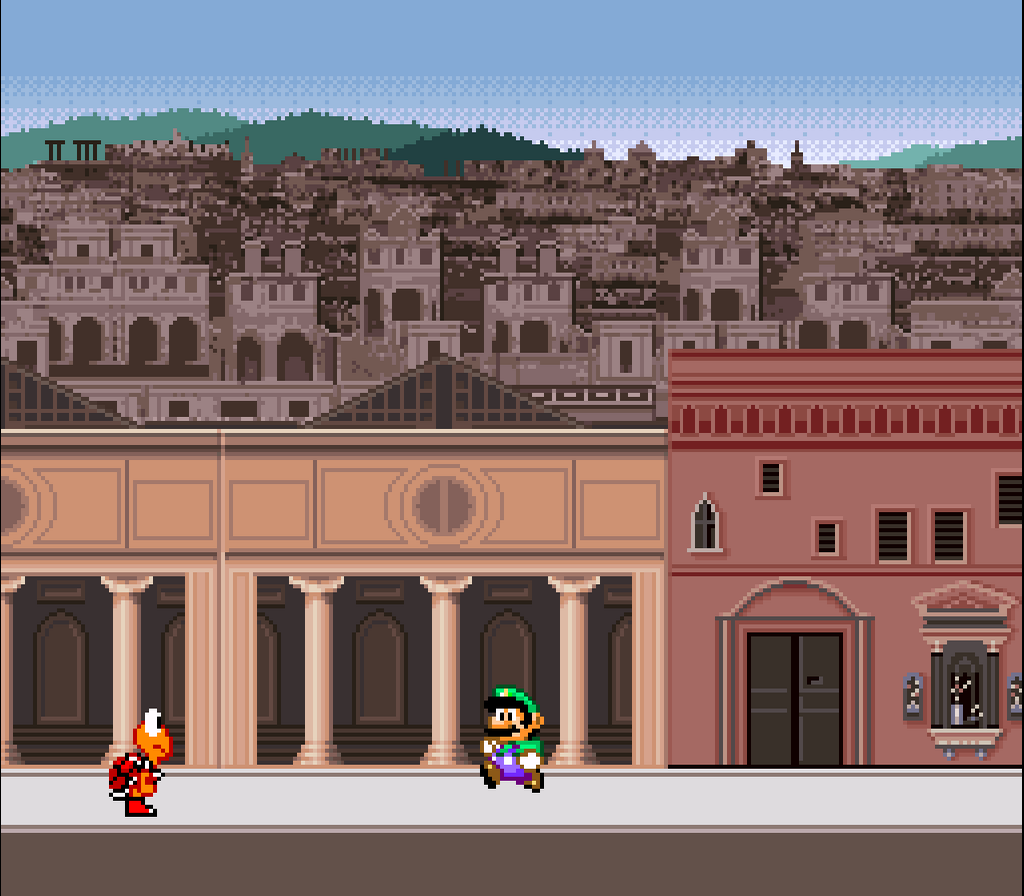

The Thwomp's grunt used to be a deep thunderous "thud". Mario's Triple Jump resembled Luigi's backward somersault in Super Mario 64 DS. Also, the sunken ship was much different in the E3 trailer, as it was more modern, had a bridge and a funnel, and was white. Jolly Roger Bay used to have music that is similar to the one used in the final game. The upgraded Triple Jump Mario receives after talking to Yoshi in the final game is the same animation used for when Mario enters any level in earlier builds. The purpose of the keys were to unlock a variety of the various doors in Big Boo's Haunt there was even a "key counter". Big Boo held a key instead of a Power Star inside him. Sound Effects Library as placeholder voice clips before Charles Martinet was brought in to give him his current Italian accent. Mario originally used the "cowboy" and "painful" yelling voice clips from the Warner Bros.
Mario is missing 18 download how to#
After the game's release, rumors started to circulate about how to unlock Luigi however, these were all proven false.Īn early screenshot showing the unused Boo key. type minigame instead, but the fact that the N64 would be sold with only one controller factored into his total removal by February 1996. The team eventually decided to put Luigi in a Mario Bros. Then, in tears, we had to ask Luigi to leave. We ran it that way, but when we made the landforms, because of hardware limitations we had a choice between cutting Luigi or making less elaborate landforms. When we made the first prototype, Mario and Luigi were on a flat field. Koizumi: One goes all the way back to Super Mario 64. I was able to do those things in Super Mario 3D World. Koizumi: This may not be a direct answer, but personally, when we made Super Mario Galaxy, I had regrets about some things. Hayashida: But at the time, when they thought about what was the most fun about playing in 3D, it was going to all sorts of places and looking for something, so they decided on players getting a Star.Īccording to Yoshiaki Koizumi, Luigi was dropped from the game because technical limitations prevented from having both him and more elaborate levels. Hayashida: Later, I asked (Yoshiaki) Koizumi-san, and he said that they tried a goal pole once for Super Mario 64. I suppose he thought this was an area that deserved effort.

Iwata: The impression the goal pole makes has a big influence over the impression that the game makes. In an interview between Iwata and Koichi Hayashida regarding Super Mario 3D Land, it was mentioned during a discussion about the Flagpole that it was once considered to be incorporated into Super Mario 64. Miyamoto: That was a remnant of an experiment we did where Mario and Luigi would run away from each other but you could still see them both. When they meet in the corridor, I was incredibly happy! (laughs) Then there was also the mode where the camera is fixed and we see Mario running away, steadily getting smaller and smaller. The screen was split and they went into the castle separately. You've tried each time, but it's never quite come together… Even with Mario 64, it started with Mario and Luigi running around together, didn't it?

Iwata: Ever since Mario Bros., you've had your heart set on making a multiplayer Mario game. This, apparently, inspired the multiplayer function of New Super Mario Bros. It was also stated that one could see Mario and Luigi meet in the corridor. Wii, Iwata stated that there used to be a multiplayer function that was scrapped from Super Mario 64, likely due to hardware limitations. ĭuring an interview between Satoru Iwata and Shigeru Miyamoto regarding New Super Mario Bros. The crouching trip kick ( + ), present in the final game, was intended to be for attacking short/small enemies, but the developers never added any enemies that were specifically targeted by that move. He is also seen climbing a ladder, swinging around a pole, and pushing a door and a block of ice. In some sketch-ups of the game's early development in Super Mario History, Mario is seen jumping on a piano with the phrase ピアノの上をあるく (Walk atop a piano). Thirty-two courses were initially planned for the game, but only 15 of them made it into the final product.


 0 kommentar(er)
0 kommentar(er)
